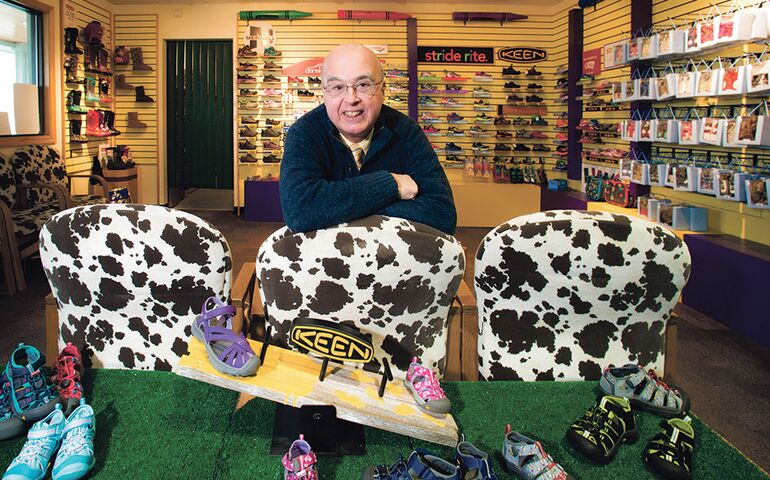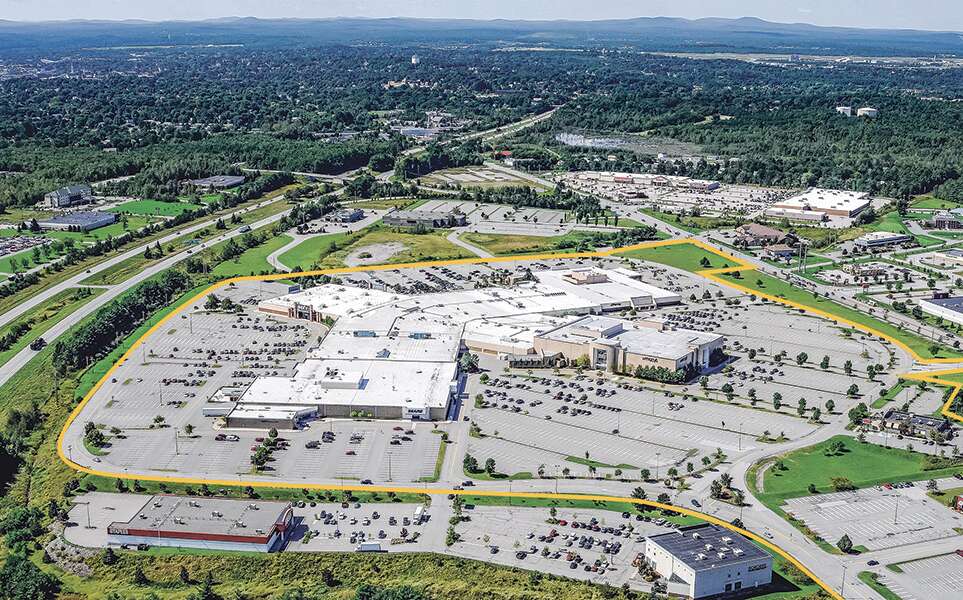
Retail continues to evolve in the face of rapid change
 2015 File Photo / Russ Dillingham
Jim Wellehan is a principal at Lamey Wellehan, a family-owned shoe retailing chain that dates to 1914.
2015 File Photo / Russ Dillingham
Jim Wellehan is a principal at Lamey Wellehan, a family-owned shoe retailing chain that dates to 1914.
In the mid-1990s malls were expanding and big-box stores like Home Depot and Borders were joining the Portland market.
Amazon was gaining a foothold online as a humble bookseller.
Today the retail market is very much driven by the speed, reliability and ease of buying virtually anything from Amazon and its convenient membership arm, Amazon Prime.
Regional malls have had to adjust and we’ve seen the departure of many of the big-box chains that exploded in the 1990s. Stores like Borders, Toys R Us, Blockbuster, Sports Authority and Filene’s Basement were part of the fabric of malls and strip centers. Kmart and Sears have been battered but still have stores in Maine.

Tale of two retailers
The front page of the Mainebiz issue of January 1996 focused on two retailers that planned to open their first stores in Portland.
Home Depot, which opened its first Maine store on Riverside Street in Portland, was hailed at the time by Mark Malone of Malone Commercial Real Estate.
Getting a Home Depot store in 1995 signaled confidence in Portland, whose downtown had lost numerous retailers, Malone told Mainebiz at the time. “This is the first major retailer to come to Portland since losing the downtown stores, and is a sign that Portland can attract them,” he said then.
The same issue of Mainebiz featured the arrival of Borders, a bookstore that had an adoring fan base but a turnstile of owners. It opened in South Portland. After a succession of ownership changes, as well as a heavy investment in the CD and DVD business, the Borders chain closed all 400 stores in 2011.

Regional malls weather changes
Maine’s regional malls and strip centers have had to make a major shift, absorbing the shift from old-line department store anchors. In some cases, malls have adapted space to a new use. In South Portland, in the Clarks Pond shopping center, a church took over vacant space. In Topsham, a medical facility took over a former Best Buy store.
Bangor Mall, at 650,000 square feet, was valued at $128 million in 2007, the Bangor Daily News reported. But it lost key tenants and occupancy slipped to 72%. Simon Property Group let it go into foreclosure. It is not known how much the new owner, Namdar Realty Group of Great Neck, N.Y. , paid for the mall, but the buyer is known for turning around distressed properties.
In South Portland, the Maine Mall, which is owned by Chicago-based Brookfield Properties Retail Group, which as retail space in 42 states, has 1 million square feet of retail space and 118 retailers. It is anchored by JCPenney, Sears and Macy’s and inline stores include Apple, H&M, Williams-Sonoma, Carhartt, J.Crew Mercantile and Pottery Barn. It has weathered many of the changes, helped in part by its proximity to much of Maine’s population and by the strength of the Portland-area economy.
Many retailers have survived and even thrived in the changed environment.
Several Maine-based retailers have shown particular resilience. L.L.Bean (founded in 1912) had sales of $1.6 billion in 2018. Lamey Wellehan (1914), Paris Farmers Union (1919) and Renys (1949) have all proven they continue to have a place in the market. It may not be a coincidence that all four of these Maine retailers are still privately held.














0 Comments